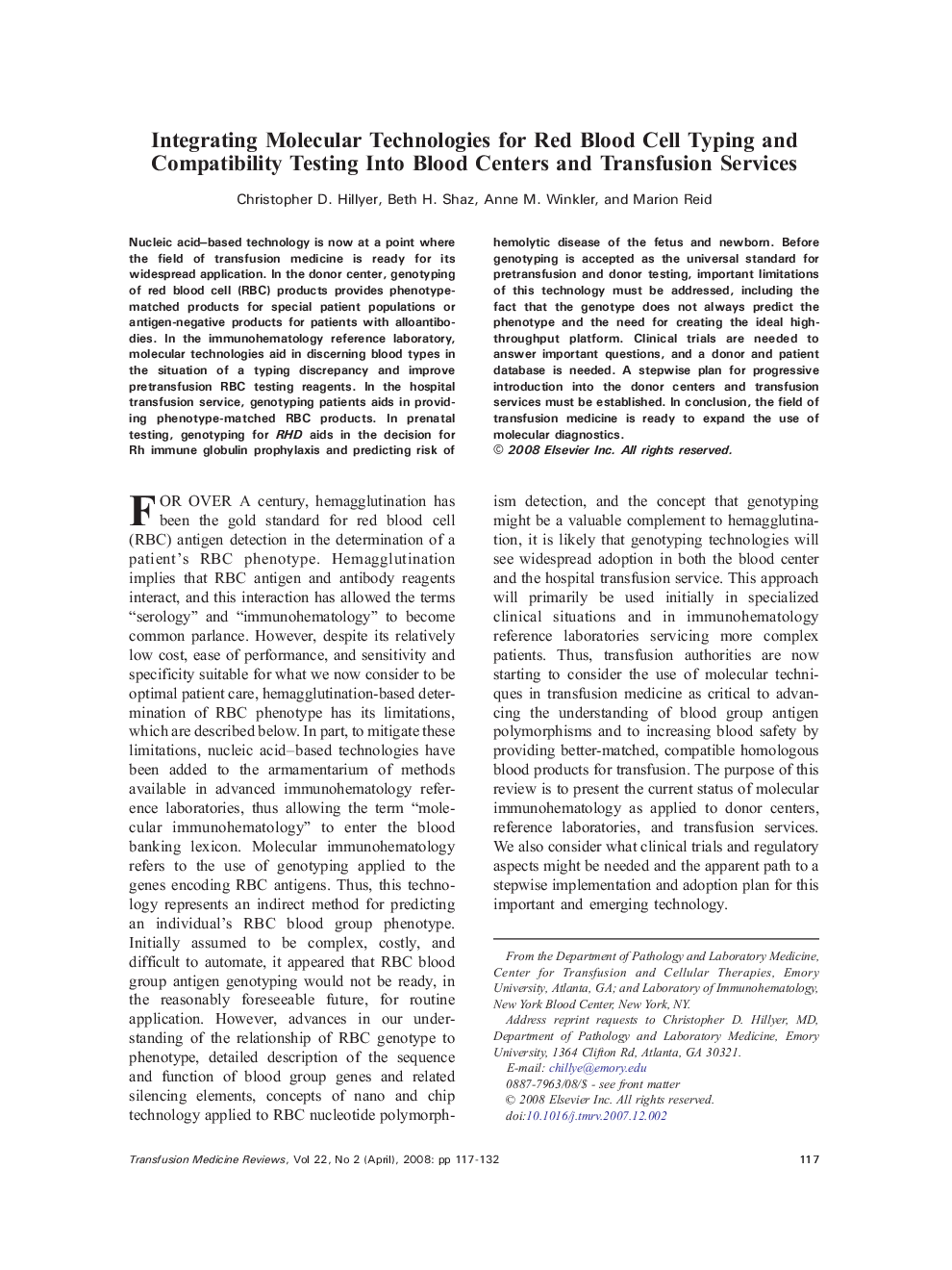| Article ID | Journal | Published Year | Pages | File Type |
|---|---|---|---|---|
| 3336885 | Transfusion Medicine Reviews | 2008 | 16 Pages |
Nucleic acid–based technology is now at a point where the field of transfusion medicine is ready for its widespread application. In the donor center, genotyping of red blood cell (RBC) products provides phenotype-matched products for special patient populations or antigen-negative products for patients with alloantibodies. In the immunohematology reference laboratory, molecular technologies aid in discerning blood types in the situation of a typing discrepancy and improve pretransfusion RBC testing reagents. In the hospital transfusion service, genotyping patients aids in providing phenotype-matched RBC products. In prenatal testing, genotyping for RHD aids in the decision for Rh immune globulin prophylaxis and predicting risk of hemolytic disease of the fetus and newborn. Before genotyping is accepted as the universal standard for pretransfusion and donor testing, important limitations of this technology must be addressed, including the fact that the genotype does not always predict the phenotype and the need for creating the ideal high-throughput platform. Clinical trials are needed to answer important questions, and a donor and patient database is needed. A stepwise plan for progressive introduction into the donor centers and transfusion services must be established. In conclusion, the field of transfusion medicine is ready to expand the use of molecular diagnostics.
